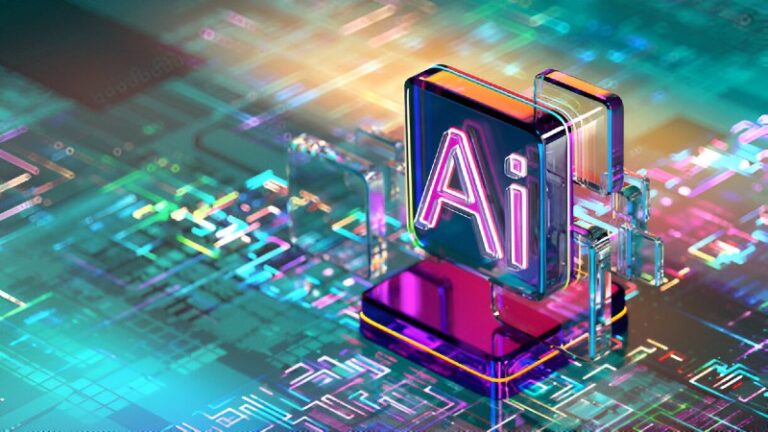The dynamic world of graphic design, historically driven by raw talent and groundbreaking ideas, is now on the precipice of its most exhilarating transformation yet: the widespread integration of Artificial Intelligence. While the buzz often centers on AI’s capacity for efficiency and task automation, the true narrative unfolds in its audacious ability to elevate AI visuals from mere utility to a realm of unparalleled creative possibility. This isn’t about AI replacing the human hand, but rather about it becoming an indispensable co-creator.
Many designers have viewed AI with a blend of curiosity and apprehension, fearing a future where algorithms eclipse artistic intuition. However, a deeper look reveals that AI is not a competitor but a sophisticated enabler. It’s unlocking pathways for designers to transcend conventional methods, fostering an environment where imagination isn’t just supported but actively ignited.
Beyond the Canvas
Forget the notion of AI as a sterile, logic-driven machine. Modern AI, particularly in its generative forms, is emerging as an astonishing source of unexpected inspiration, functioning as a true creative muse for the graphic designer. Its capabilities extend to:
- Synthesizing Unforeseen Styles: AI can delve into vast visual archives, cross-referencing and blending disparate artistic movements to generate entirely new visual lexicons. Imagine a design that seamlessly marries the intricate patterns of Art Deco with the stark minimalism of Bauhaus, or the vibrant chaos of street art with the refined elegance of classical portraiture. These unprecedented AI visuals provide designers with fertile ground for exploration, sparking ideas that human intuition alone might overlook.
- Rapid Ideation of the Abstract: Translating abstract concepts into tangible visual forms has always been a core challenge for designers. AI now serves as an agile brainstorming partner, capable of quickly rendering countless visual interpretations from even the vaguest prompts.
- Democratizing Complex Visualizations: Previously, mastery of intricate techniques like advanced 3D rendering, complex procedural generation, or highly specialized digital painting styles demanded years of dedicated practice. AI-powered tools are now lowering the entry barrier, enabling designers to experiment with and produce sophisticated AI visuals that were once the exclusive domain of highly specialized artists.
AI’s Catalytic Role in Creative Breakthroughs
| AI Application Area | Conventional Value (Streamlined Process) | Transformative Value (Unlocking New Creativity) |
| Generative Algorithms | Quick mock-ups, varied iterations | Discovery of novel aesthetic fusions, conceptual visualization |
| Intelligent Style Transfer | Applying existing filters | Crafting unique, blended artistic expressions with ease |
| AI-Guided Brainstorming | Suggesting common design solutions | Uncovering unexpected, disruptive design pathways |
| Advanced Image Manipulation | Automated retouching, background removal | Repurposing raw imagery into distinctive artistic assets |
The Bespoke Revolution
While speed and cost-effectiveness are undeniable advantages, the profound impact of AI in graphic design truly shines in its capacity for hyper-personalization and contextual relevance. Generic visuals are rapidly becoming obsolete; the future belongs to AI visuals that connect on an individual level:
- Hyper-Contextual Brand Experiences: Envision a brand’s visual identity morphing in real-time based on a user’s demographics, past interactions, or even their current mood. AI can analyze vast streams of behavioral data to deliver visual content that feels intimately crafted for each person, far surpassing the limitations of static branding.
- Anticipatory Design for Peak Impact: AI is evolving beyond reactive analysis to proactive prediction. By learning from the performance of past designs and identifying emerging trends, AI can provide designers with insights into which visual elements are most likely to resonate with specific audiences.
- Fluid Cross-Platform Adaptation: In a fragmented digital landscape, maintaining visual consistency across devices and platforms is a constant battle. AI can intelligently reconfigure designs to fit any screen size, aspect ratio, or even cultural nuances, ensuring the visual message remains potent and culturally appropriate wherever it appears.
The Graphic Designer as Visionary Architect of AI Visuals
The integration of AI doesn’t diminish the role of the graphic designer; it elevates it. The designer of tomorrow will no longer be primarily an executor of tasks, but rather a visionary architect, skillfully commanding AI tools to manifest groundbreaking creative visions. This evolution demands a refined and expanded skillset:
- Intuitive Prompt Crafting: The art of articulating precise, imaginative prompts to generative AI will be paramount, translating complex human ideas into instructions that yield spectacular AI visuals.
- Discerning Curation and Refinement: AI will produce an abundance of options, but the human eye for detail, artistic judgment, and strategic insight will remain indispensable for selecting and refining the most impactful creations.
- Ethical Stewardship in Design: Navigating the complexities of AI-generated content, including issues of data bias, copyright, and authenticity, will be a core responsibility for ensuring ethical and trustworthy design practices.
- Strategic Creative Leadership: With automation handling routine tasks, designers can dedicate more cognitive energy to high-level strategic planning, client communication, and crafting emotionally resonant narratives.
A Symphony of Human and Machine
The future of graphic design, profoundly shaped by AI visuals, is a testament to human ingenuity amplified by intelligent technology. It’s a collaborative symphony where AI functions as an extension of the designer’s creative spirit, expanding horizons, accelerating workflows, and unlocking an unprecedented era of visual innovation. Designers who wholeheartedly embrace this symbiotic relationship will not only thrive but will emerge as the pioneers shaping the next wave of iconic visual experiences.
Conclusion
This transformative integration isn’t merely a technological upgrade; it’s an exhilarating invitation for graphic designers to reconnect with the purest essence of their craft: boundless imagination, insightful problem-solving, and the timeless art of storytelling. By masterfully wielding AI, designers can empower themselves to create AI visuals that are not only extraordinarily efficient but also profoundly impactful, intimately personalized, and truly unforgettable. The future isn’t just arriving; it’s bursting forth in a dazzling display of AI-powered creativity, co-authored by human vision and algorithmic prowess.
Frequently Asked Questions (FAQs)
How is AI truly enhancing graphic design beyond automation?
AI is enabling designers to explore novel aesthetic combinations, rapidly prototype abstract concepts, and democratize complex visual styles, acting as a creative muse rather than just an automation tool.
Will AI eventually replace human graphic designers?
No, AI is more likely to redefine the graphic designer’s role. Instead of replacing them, AI enhances capabilities, allowing designers to focus on strategic vision, critical curation, and human storytelling, evolving into AI conductors.
What are some emerging trends in AI visuals for graphic design?
Key trends include hyper-personalized brand experiences, predictive design for optimal impact, and seamless cross-platform adaptability, moving towards more bespoke and contextually relevant visual content.
What new skills do graphic designers need to work effectively with AI?
Designers will need to master prompt engineering, hone critical curation and refinement skills, understand ethical AI design, and develop a stronger strategic visionary mindset to leverage AI effectively.
What are the main ethical considerations when using AI in graphic design?
Ethical concerns include intellectual property and copyright of AI-generated content, potential biases in AI models, and ensuring authenticity while maintaining human touch and oversight in the creative process.
Can AI help with personalizing design for specific audiences?
Yes, AI can analyze user behavior, preferences, and demographics to create highly personalized AI visuals and dynamically adapt designs for individual users, leading to more engaging and targeted experiences.
How does AI contribute to design efficiency?
AI automates repetitive tasks such as image resizing, background removal, file optimization, and even initial layout suggestions, freeing up designers to focus on more complex and creative aspects of their work.


